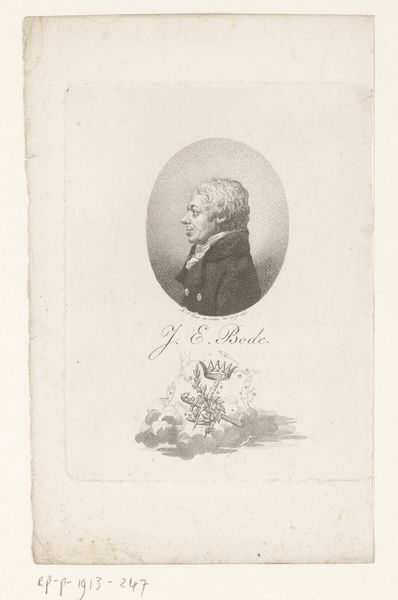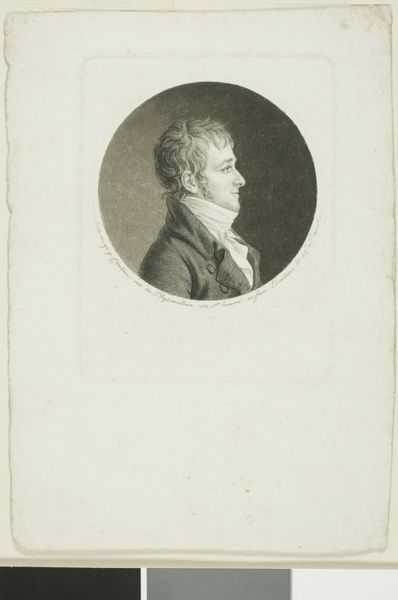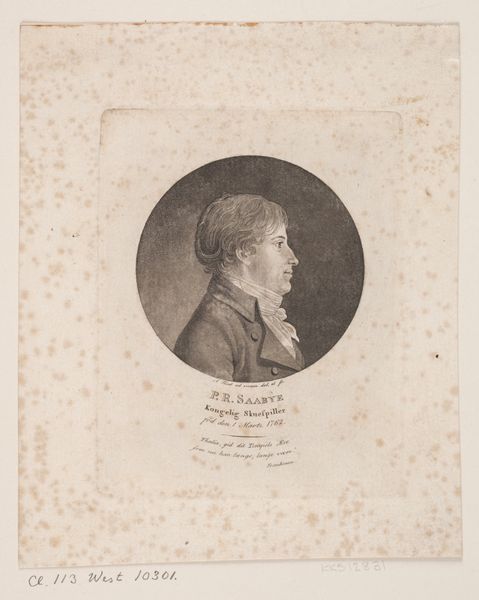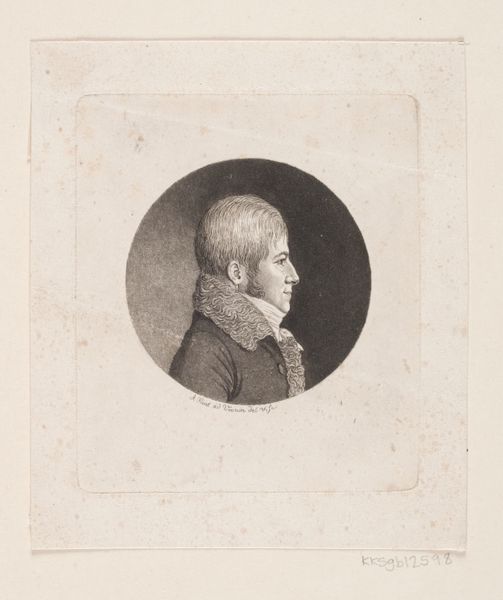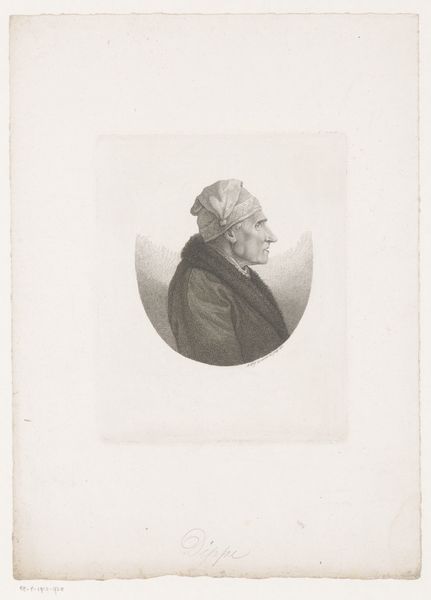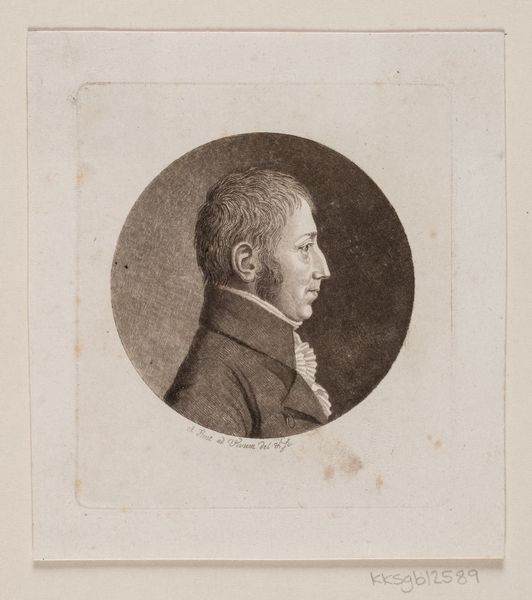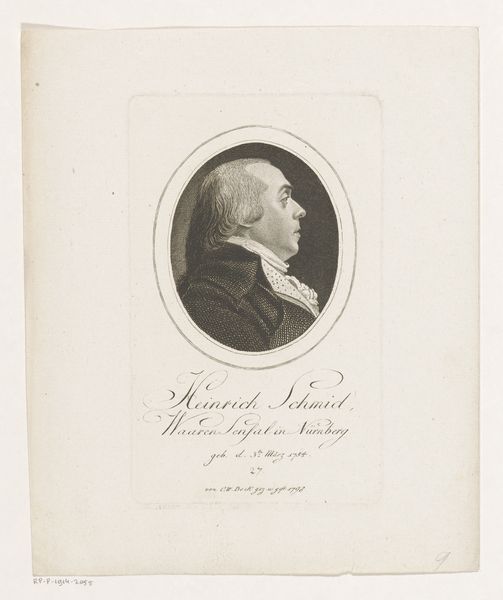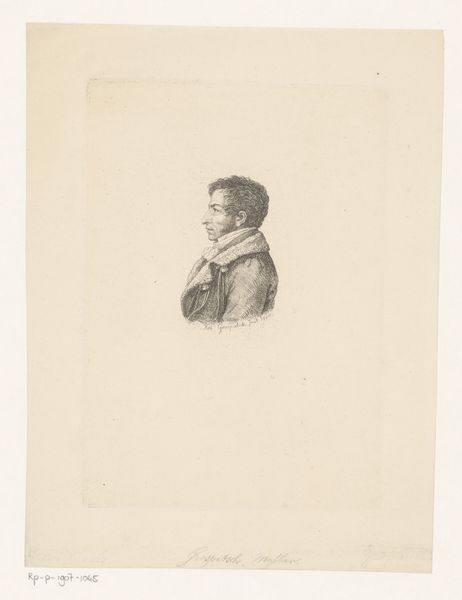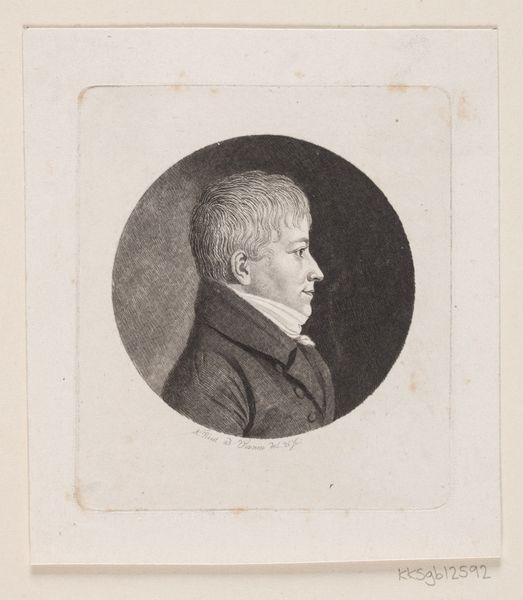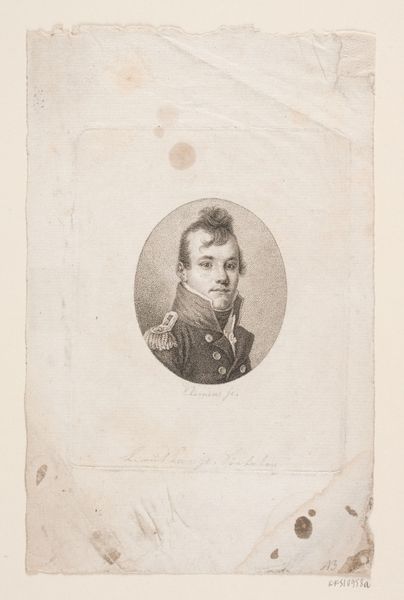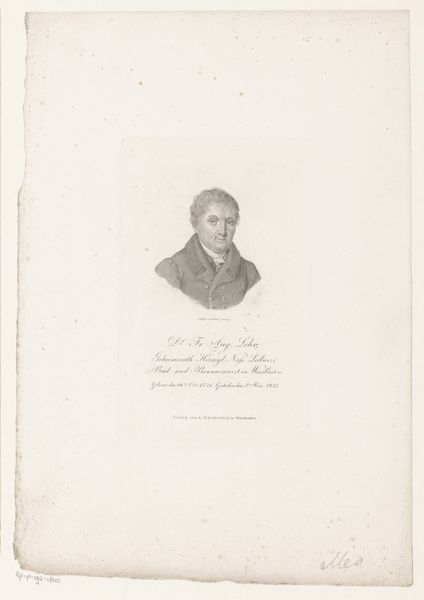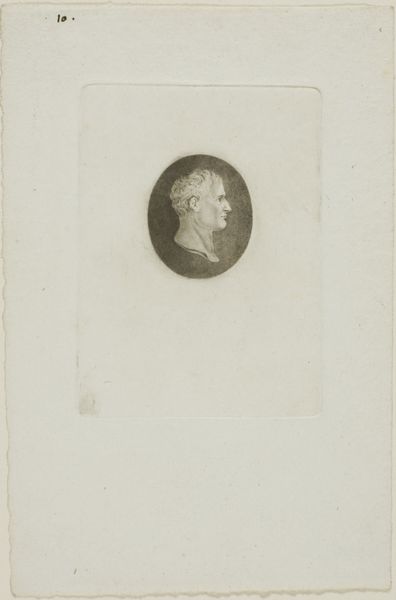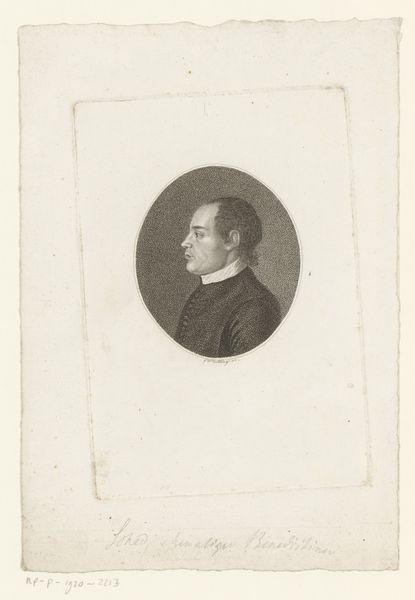
drawing, print, engraving
#
portrait
#
pencil drawn
#
drawing
#
neoclacissism
# print
#
old engraving style
#
engraving
Dimensions: height 178 mm, width 137 mm
Copyright: Rijks Museum: Open Domain
Editor: This is "Portret van Johann Heinrich Wilhelm Witschel" by Johann Gottlieb Baerenstecher, made sometime between 1793 and 1801. It's an engraving – the detail is incredible, especially within the oval frame. It feels very formal, almost like a classical sculpture. What's your take on it? Curator: Indeed, the classical reference is astute. Given the Neoclassical style, it’s important to think about the socio-political context. Consider how artists at the time consciously emulated Greco-Roman ideals, often in service of revolutionary or nationalist agendas. Portraits, particularly, became vehicles for projecting an image of civic virtue and idealized leadership. What do you think the artist may have been trying to communicate about Witschel himself through these visual cues? Editor: Maybe an image of someone strong and intellectual? He looks so stoic in profile. And I suppose printmaking would have made this image fairly accessible at the time? Curator: Exactly! The reproducibility of printmaking allowed for wider dissemination of such ideals. We can see how even portraiture played a public role, shaping perceptions and reinforcing societal values. Also, consider the patronage system - who commissioned this engraving and why? Was it for family, professional recognition, or something more political? Editor: I hadn't considered who paid for it. That could change the whole message. I always think of art being separate from politics but you’ve given me a new way to look at this and portraits in general! Curator: And hopefully a richer understanding of the very public life of images, even portraits. Editor: Definitely. Thinking about how art shapes, and is shaped by, societal values really adds another dimension to appreciating it.
Comments
No comments
Be the first to comment and join the conversation on the ultimate creative platform.
